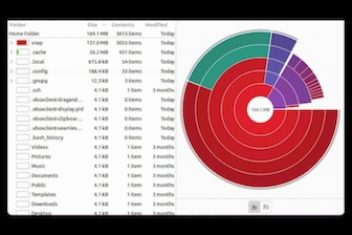Being able to access working space from any device, any place in the world, and at any time is now more than just convenience but a necessity. Especially after the mass movement online during the pandemic in 2020.Virtualized Desktops make remote work even easier. In the essence of this virtualization technology lies the separation between the working environment (operating system with software that users need to work) and the device they use to access it.
Integrating Virtual Desktop Infrastructure (VDI) into the working process increases employees’ productivity as they can have access to their main working device from home if there is a need. Users can have access to their desktop remotely through the endpoint while using the internet. Although this will reduce the expenses as you can work with old devices just by connecting them to the new one, and getting new hardware isn’t a necessity for businesses.
The main benefits from its implementation are the centralized management and control over the available software and increased security because the software running on the local PC or other device has no influence over the remote desktop and the access to it can be protected via VPN.
Read: How to Install Vagrant on Ubuntu 22.04
So here’s what you need to consider in attempts to finding the best Virtual Desktop solution for your business:
Market research
Checking market offerings is the first step on the list. This will help you to see the leaders in the niche, the plans they have, and what’s included in the package. In addition, it’s worth checking user feedback and professional reviews comparing the most popular options like Windows Virtual Desktop vs Amazon AppStream and others to see how their performance is different and use cases when it’s recommended to choose one solution over another, as well as case studies with illustrations how a certain provider can cover the needs of businesses operating in the same sphere as your company.
Read: Three Pieces of Advice for Revamping Your Virtual Meetings
Compatibility with your current infrastructure
It’s critical to choose the Virtual Desktop that is compatible with the other tools used in the company. Otherwise, you will need to spend additional resources to find a substitution for the convenient tools or migrate to another remote desktop software. For instance, if you use Active Directory for permission management, choosing a vendor that supports it will be a natural move here. Also, make sure to ask about the customization if you plan to introduce new tools soon before signing the contract.
On-premise vs Cloud
Another important point for consideration is deciding between the on-premise model where you take full control over the hardware management and cloud solutions that come in the form of Desktop-as-a-service or a Private cloud where you can ensure the integrity of your data while delegating the server operations to the vendor. Regardless of this decision, don’t forget to double-check the latency of connection to the virtual desktop to have it no more than 100ms otherwise, it will not be convenient for your employees to connect. It’s easier to achieve it by choosing an on-premise solution in a data center near the areas used for accessing remote working environments or a cloud solution with the infrastructure scattered over several physical locations. In the second option, check the possibility of increasing the coverage in multiple regions or time for the deployment process in several locations with the provider.
Read: Cloud storage : What you need to know
Price
Last but not least goes the price of a chosen solution. There are different factors influencing the price: cloud and managed services are usually pricier than on-premise solutions when you have a technical team to support them. Then go the requirements for the capacity for virtual desktop and tasks you are adopting it for. For instance, desktops for the customer support operations will be less costly than for software engineering departments. Also, check the terms carefully as additional costs may come from unexpected aspects like resource scaling over the allowed burst, customizing the remote desktop to support specific software, or providing technical advice that does not fit in the chosen support tier.
Read: Cloud Security Posture Management: All Information You Need to Know
Going through this list and comparing all the solutions under consideration against these criteria will help you to choose the perfect Virtual Desktop for your business tasks that will match with the other technologies in use and make the most from remote work mode.
Rob Turner – rob[@]thecopywriter.io
If you like the content, we would appreciate your support by buying us a coffee. Thank you so much for your visit and support.



